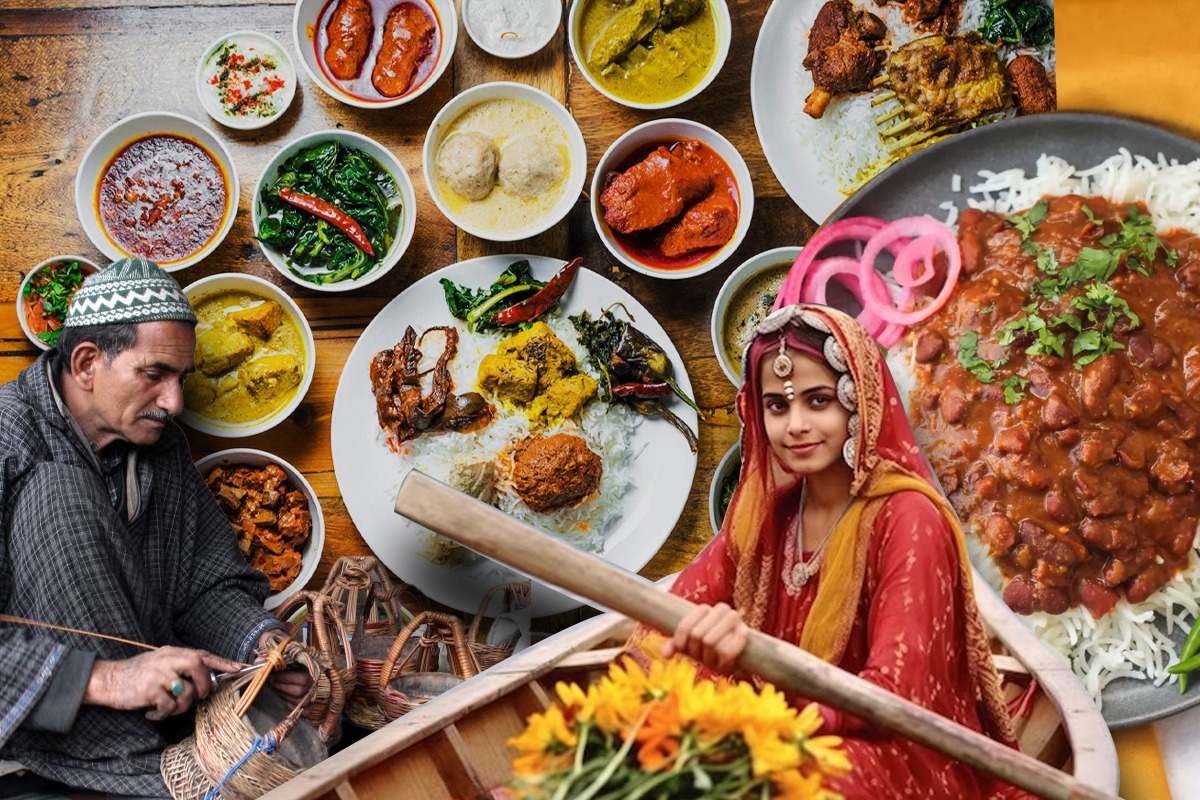

While certain dishes are emblematic of specific communities, they also serve as bridges, fostering cross-cultural appreciation.

What, how, and with whom we eat helps to stake out who `we’ are—showing it to our young, as well as to visitors. Food can also recast who `we’ are when the times, they are a-changin’.
I don’t just mean pizzas and burgers marking us cosmopolitan, but also how we integrate or separate our sense of who we are, our identity. In Ladakhi hamlets, for instance, meats eaten by Buddhists and Muslims used to be cooked together for community celebrations a few decades ago but, as identities have calcified, that’s stopped.
In recent decades, Ladakh Buddhist Association activists have persuaded Buddhists not to eat meat at all on certain days of the lunar month and even tried to close meat shops on those days. Inter-marriage too has become uncommon, although it was frequent enough until about the 1970s—with each spouse retaining their religious identity, and different children choosing either religion.
The difference between Kashmiri Sikhs and other Kashmiris partly involves food. I was so fascinated by a conversation I witnessed about what `we’ eat—and don’t—when a large group of Sikhs came to call at a Muslim neighbour’s house in Baramulla’s Sangri colony on the day before a wedding that I included it in a paper for a peer-reviewed German university journal.
But, if food differentiates, it can also integrate. Migration from Kashmir (more so since 1990, but ongoing for centuries) has made nadru yakhni (lotus stem yoghurt curry) and dum aloo common at Dogra weddings, even as far afield as Kishtwar.
Flavours of identity
Food traditions have to do with geographical as much as sociological and social milieux. A feast at a Gujjar home in the hills outside Poonch might comprise makki (corn) rotis with sauteed greens and large dollops of fresh ghee.
Among most other communities in the erstwhile state, one would only find rotis (mainly made of maida) at breakfast. Rice is so common that Kashmiris use the same word for rice as for food—batha.
That brings to mind a fun story: several Kashmiri lawyers had gone to Delhi and having heard much about Karim’s restaurant, went there for lunch. Ordering was left to the only one among them who had been before, and much qorma and ishtoo were eaten with the khmeeri rotis that kept coming.
Finally, the waiter asked if they would like anything else, and one of the lawyers said: `haan, ab khana le aa (yes, now bring us food).’ The one who had been there before explained to the stupefied waiter that his colleague wanted a plate of rice. White rice. Not biryani. In Karnah, one would hope to be served the tastier and heavier red rice, but a mound of white rice is the Valley’s staple.
Kashmiri and Kashmiri
People speak glibly of `Kashmiri food,’ but a yakhni or a roghan josh cooked in a Muslim kitchen or a Pandit kitchen can differ. Even if not every palate can make out the difference, each community holds to culinary differences as markers of who they are.
True, the difference in their respective fried ribs is quite obvious. Pandits’ kabargah is marinated. Muslims’ Tabak-maaz is scalded without marination. Both can be delicious, but a tabak-maaz is best chewed fresh off the fire.
Matsch, dum aaloo, and tsuk wangan (sour aubergine) are mainly Pandit dishes—and turmeric-based tsaman kaliya, but both communities often make tsaman tamatar of puffed cottage cheese, albeit a little differently.
At least some in each community admire and value the other’s culinary traditions, even while holding proudly to their own. The world-famous poet Agha Shahid Ali introduced me to kabargah at dinner in Srinagar a quarter-century ago, announcing with aplomb that `I will not let it be forgotten’ in the Valley.
His father Ashraf Ali’s eyes twinkled as he added that he had had so many Pandit students at Srinagar’s College of Education that he had learnt authentic bata-haak, the Pandit recipe for Kashmir’s staple green. Unless teachers’ training is involved, it is widely accepted that a Muslim is unable to deliver a simple, soothing dish. Civit-haak, yes, but not quite Bata-haak.
Of course, tastes are evolving. Even in a Kashmiri village, I have now had exquisite qorma (the yoghurt-based Delhi-Lucknow sort, not Kashmir’s traditional marchwangan qorma). Biryani stalls too now do brisk business in Kashmiri towns. And Ghee is gradually becoming as valued addition to a meal as it is to rajma-chawal (red beans and rice) in a Dogra house, or to makki (corn) rotis at a Gujjar feast.
As tastes evolve, there will no doubt be greater integration and innovation of all sorts. After all, the fact that dosas, idlis, samosas, aalu parathas, dhoklas, and ras malai are available in cities across the country is a gift of less than 50 years.